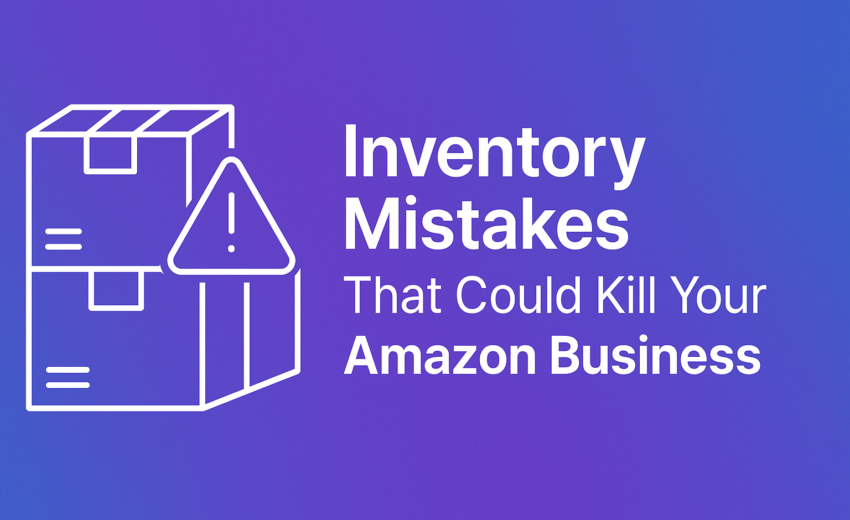
📖 Introduction:
Most new Amazon sellers think inventory is just about “having enough stock.”
But that’s only half the truth.
Poor inventory management can silently destroy your business by racking up storage fees, causing stockouts, and creating cash flow nightmares.
In this blog, we’ll dive into the most common (and costly) inventory mistakes Amazon sellers make—and how you can fix them before they damage your business.
⚠️ Why Inventory Management Is Critical:
- 🧾 Amazon charges extra for overstocking (especially with FBA)
- 🚫 Stockouts kill your listing rank and sales momentum
- 💸 Cash tied in the wrong product = no budget for ads or restocking winners
- 📉 Your product might be great—but bad timing or mismanagement will kill sales
❌ Top 5 Inventory Mistakes (and How to Avoid Them)
1. Overstocking Slow-Moving Products
📉 The Problem:
You ordered 1,000 units thinking they’d sell out in a month… but 6 months later, they’re still sitting in Amazon’s warehouse collecting storage fees.
🛠 Fix:
- Start with smaller quantities (100–300 units)
- Use FBA restock limits as a performance indicator
- Watch sell-through rate weekly and reorder based on real demand, not hope
2. Underestimating Seasonal Demand Spikes
📉 The Problem:
Your product sells well year-round, but you go out of stock during Q4, Prime Day, or holidays—missing the biggest sales windows.
🛠 Fix:
- Use tools like Keepa or Amazon Brand Analytics to review seasonal spikes
- Plan 1–2 months ahead for major events
- Build in buffer inventory during peak seasons
3. Not Using Forecasting Tools
📉 The Problem:
You’re guessing how much to reorder, leading to constant over/understocking.
🛠 Fix:
- Use inventory tools like SoStocked, Sellerboard, Forecastly
- Track daily sales velocity
- Plan restocks using historical data + marketing calendar
4. Ignoring Amazon’s Restock Reminders
📉 The Problem:
You get restock alerts in Seller Central—but ignore them until it’s too late.
🛠 Fix:
- Monitor restock suggestions weekly
- Set calendar reminders to check your inventory planning tab
- Combine Amazon suggestions with your own campaign calendar
5. Relying on Only One Fulfillment Method
📉 The Problem:
If you only use FBA and Amazon limits your storage or delays check-in, your entire business is paused.
🛠 Fix:
- Use FBM (Fulfilled by Merchant) as a backup
- Store extra units with a 3PL to stay flexible
- Balance your stock between FBA + backup stock for emergencies
✅ Bonus Pro Tip:
Use a simple spreadsheet, Google Sheet, or inventory tool to review weekly.
You don’t need expensive software to track:
- Product
- Units in FBA
- Daily sales
- Reorder points
- Lead times
- Units in transit
📊 Consistent tracking = fewer surprises and smarter decisions.
✅ Final Thoughts:
Your inventory is your lifeline on Amazon. Even if you have the perfect product, perfect listing, and great ads—without the right inventory at the right time, none of that matters.
Bad inventory management leads to lost money, lost momentum, and lost ranking. But with a few simple systems, you can stay lean, responsive, and always in control.
🚀 Need Help Managing Your Inventory Smartly?
Alizatouch helps sellers streamline their inventory strategy with:
✅ Inventory audits and forecasting
✅ Launch planning for seasonal spikes
✅ FBA + FBM balancing
✅ Supplier coordination and lead-time planning
✅ Amazon restock compliance
📩 Talk to our team and get your inventory flow optimized—so your sales never stop.

How to Handle Negative Reviews Without Losing Sales




